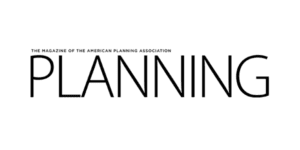
Primed for Deliveries
Rapidly changing e-commerce trends and technologies mean big changes for land-use and infrastructure planning.
Learn from award-winning professionals — explore our whitepapers, blogs, and the latest industry updates.
Join our dynamic organization of engineers, land surveyors, landscape architects, environmental scientists, and architects!
Talk to a market leader today! We’ll answer any questions you have about our professional services.
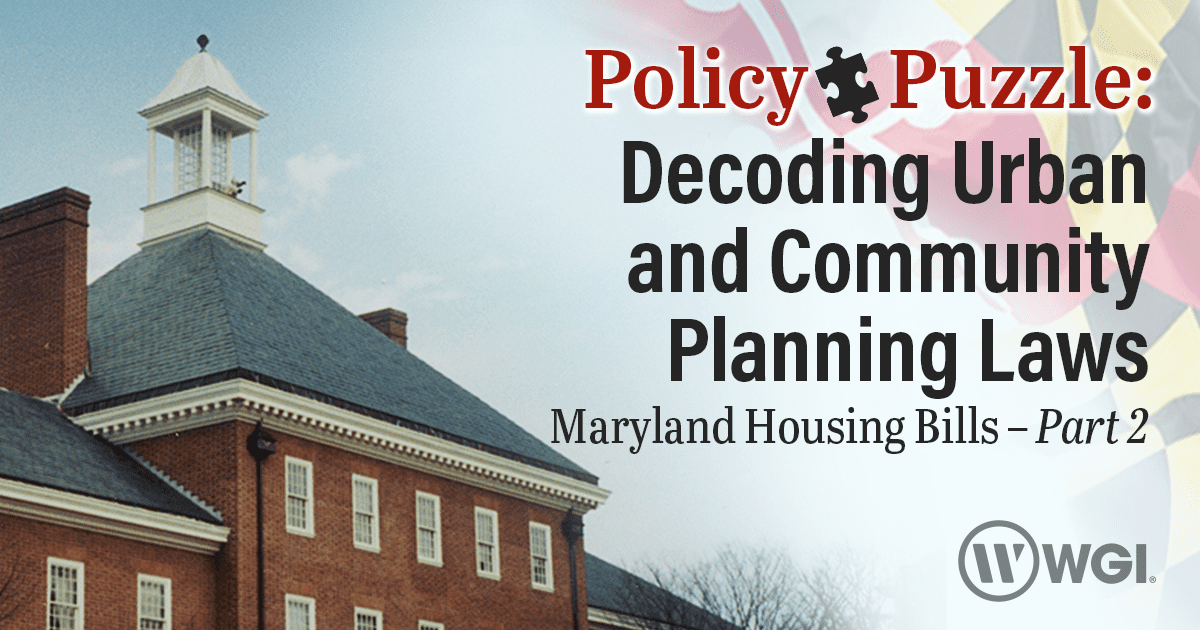
As outlined in our previous post, The Housing Expansion and Affordability Act seeks to expand the construction of new housing, particularly affordable housing, by removing local zoning barriers. The bill incentivizes developers to add affordable housing options in future developments and would allow certain development projects to exceed typical density limits if the new development incorporates a certain percentage of affordable housing units.
But how does this play out on the ground, and where could we see potential increased density?
As a reminder, projects qualify if they are new construction or substantial renovations on property in one or more of the following categories.
The first category is built upon the widely accepted idea of Transit Oriented Development, which aims to increase density near transit stops. The bill defines “Rail station” as a present or planned (1) MARC station along the Penn, Camden, or Brunswick lines; (2) Baltimore Metro SubwayLink station; (3) Baltimore Light RailLink station; (4) Metrorail system station in the State; or (5) any other passenger rail station.
These locations are identified in the map below:
*Map is only illustrative in purpose. This is not an official map of eligible properties.
According to our basic analysis, there are approximately 80,000 potential parcels within ¾ of a mile of each of the 97 identified Maryland passenger rail stations. These are spread across nine counties.
It is less easy to quantify the extent of eligible properties in categories two and three, therefore, determination would likely be interpreted by localities on a case-by-case basis. Land or property with improvements owned by a non-profit is difficult to identify statewide and information regarding the ownership status of property would be determined from tax records.
“Property Formerly Owned by the State” is defined in the bill as required to (1) consist of more than one building, (2) include at least 1 building that was built more than 50 years before the date of application for the project, and (3) be appropriate for redevelopment as determined by the Secretary of Housing and Community Development.
The third category targets specific public redevelopment projects and will likely be less common.
Let us consider a hypothetical scenario to illustrate the practical implications of the Maryland Housing Expansion and Affordability Act.
Imagine a developer aiming to construct a small multifamily building with ground-floor retail on a plot of land bordering two counties and located approximately a half-mile from a train station.
Under the existing zoning code, the plot could accommodate seven housing units and no commercial uses, potentially restricting the economic feasibility of development. In this case, the Maryland Housing Expansion and Affordability Act provides a 30% density bonus and allows mixed-uses. With the Act in place, the plot could accommodate a development with two additional housing units, as long as one of those is affordable to households earning 60% or less of the area median income (less than $67,000 for a family of four), and commercial space.
Under this Act, a developer now has the opportunity to build more housing units on the same plot of land, likely increasing the economic viability of the project while also ensuring that mixed-use and affordable housing options are provided to the community that otherwise would not have been feasible. Furthermore, the Act expedites and simplifies the approval process, meaning a developer can start construction sooner, accelerating the availability of housing in the community.
While this example may seem modest, small-scale projects are typically more feasible in the short term due to the limited and atypical lots available for development or redevelopment. These same standards still apply to larger plots and those located in higher-density or non-residential zoning districts. When applied across the state, these incremental changes help to unlock untapped potential and can lead to more housing units overall, more affordable units, and a greater diversity of housing types.
For more information on Maryland’s Housing Expansion and Affordability Act or expert support in planning your next urban and community planning project, Contact Our Team!

WGI is a national design and professional services firm leading in technology-based solutions for the construction of public infrastructure and real estate development. At WGI, we’re providing Tomorrow’s Infrastructure Solutions Today.

Rapidly changing e-commerce trends and technologies mean big changes for land-use and infrastructure planning.
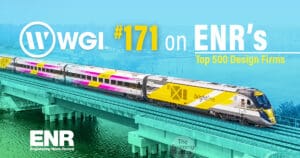
WGI was ranked in the top 200 for the tenth consecutive year by Engineering News-Record (ENR) on their Top 500 Design Firms List for 2024.
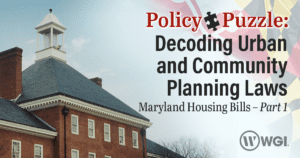
Whether you’re a local government official, city planner, developer, or simply a concerned citizen, understanding the Maryland Housing Expansion and Affordability Act is crucial for the well-being of our communities.
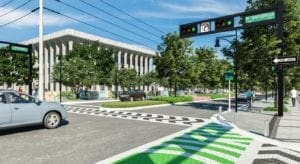
Discover the 3D design software breakthroughs that are enabling designers to accomplish things that CAD users could only dream about.
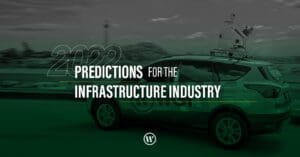
WGI’s experts from multiple divisions share their thoughts and predictions in terms of what we can expect to see in our industry in 2022 and beyond.

WGI’s Lisa Nisenson was featured on the American Planning Association’s podcast to discuss rapidly changing e-commerce trends and technologies, and the long-term implications of COVID-19 on the way planners are thinking about the future.
You’ve been searching for a place like WGI. We look forward to meeting you soon.
Sign up to receive emails to hear our latest news and achievements in our monthly newsletter.
Enter your zip code, and we’ll personalize your experience with local projects, office locations, team members, and more.
WGI supports its associates with meaningful opportunities for growth, strong benefits and perks, while we work collaboratively with clients and co-consultants to shape and improve communities.






WGI is a dynamic organization with opportunities nationwide for engineers, land surveyors, landscape architects, environmental scientists, and architects.